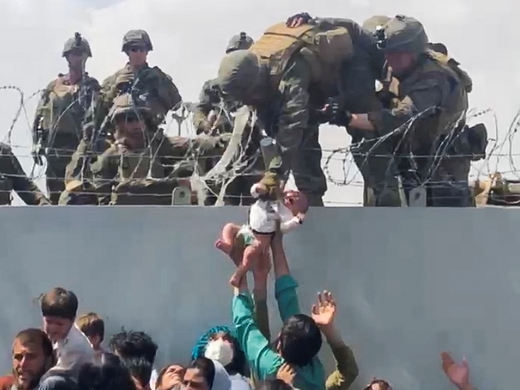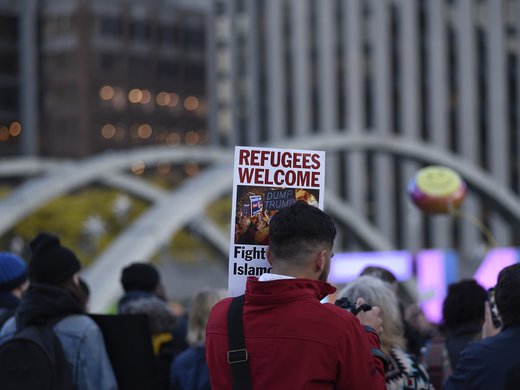The Syrian refugee crisis confronts the European Union with an acute dilemma. Europe has a historic responsibility to help victims of war and violence, and responsible politicians recognize that it is inhumane to bar entrance to people fleeing for their lives. For moral and practical reasons, the EU cannot build a modern version of the Iron Curtain around its perimeter. And yet it is also clear that both administrative and political problems – not least a populist backlash against the new arrivals – limit the EU’s capacity to absorb large numbers of migrants in a short period of time.
Dealing with the influx will require addressing the reasons that impel millions of people to flee their countries. And while those causes include political pressures – particularly the devastating civil wars in Syria and Iraq – the refugee flows also reflect the inability of the Middle East to produce the income growth that is lifting Asia, Latin America, and large parts of Sub-Saharan Africa out of poverty.
It is becoming increasingly clear that ensuring economic opportunities for refugees should be high on the EU’s agenda. Europe should take a page from the Syrian business community’s efforts to relocate some of their country’s enterprises to the Gaziantep Free Economic Zone in Turkey. Where possible, the EU should work with countries currently hosting refugees to establish development zones where displaced Syrians are allowed to work legally.
The lack of opportunities on offer in Syria’s neighbors is exacerbating the underlying economic problem. Young people are being forced to interrupt their education, and refugees are fully or partly barred from legal labor markets, owing to fears that they will compete for jobs with local inhabitants. They thus face a bleak choice: life in the camps, attempting to eke out a living in the informal sector, or the hope of a future in Europe. Many choose the latter.
The longer refugees remain in poor living conditions, with inadequate educational facilities for the young and no real employment opportunities, the more likely the camps are to turn into centers of disenchantment, boredom, and radicalization. As the fighting back home drags on, the risk that refugees will never be able to integrate into a stable society is growing.
The French and German economy ministers, Emmanuel Macron and Sigmar Gabriel, have recently produced a joint proposal for a €10 billion ($10.8 billion) fund to stabilize the region. How that money is spent needs to be carefully planned, so that it enhances the long-term prospects of the displaced, rather than being siphoned off by corrupt politicians and bureaucrats.
The EU should support the expansion of experiments such the Gaziantep Free Economic Zone. Refugee camps need to be turned into magnets of entrepreneurial dynamism, tapping into the large number of Syrian business leaders displaced by the conflict and providing a model for the country when the war is finally over.
History is full of examples of small, dynamic centers galvanizing much larger areas. Late medieval Europe grew rich because of the exceptional status of self-governing city-states. Deng Xiaoping kick-started China’s development in the 1980s by creating so-called special economic zones, with regulations designed to allow markets to flourish. In both cases, these areas created powerful demonstration effects. The rest of the region wanted to emulate them.
To be sure, refugee labor is a delicate political issue for Syria’s neighbors. An estimated two million Syrians live in Turkey, and more than one million live in Jordan. Most of them are living outside refugee camps, and many are working – for the most part illegally. Unemployment in Turkey and Jordan are about 10% and 12%, respectively, and their governments are naturally wary of programs that could cost their citizens jobs.
The aim of development zones in frontline countries should thus be to generate benefits for both refugees and the host communities. The EU could, for example, finance construction of residential buildings, offices, warehouses, and public-sector facilities, increasing demand for local construction services.
Displaced Syrian entrepreneurs and foreign companies could establish activities in the zone and employ both Syrian refugees and workers from the host countries. The program could also offer disrupted Syrian businesses a chance to restart in new facilities. It could also include combined manufacturing and training programs, with European employers sending skilled workers to train refugees.
The activities in the zone would likely need subsidies from the EU in order to be attractive to investors. Apart from capital injections for construction work, support could take the form of subsidized rents or assistance for firms that employ refugees. These new entrepreneurial skill centers would be designed so that they could easily be relocated to a post-conflict Syria. Like European countries, Syria’s neighbors worry about the possible long-term presence of refugees. The careful design of an “economy in waiting” would help to assuage their fears.
Development zones cannot be a silver bullet. There is no substitute for lasting peace in Syria. But they would offer a chance to begin addressing a tragic and avoidable consequence of the civil war: the exclusion of millions of people from the opportunity to earn a legal living for themselves and their families.


